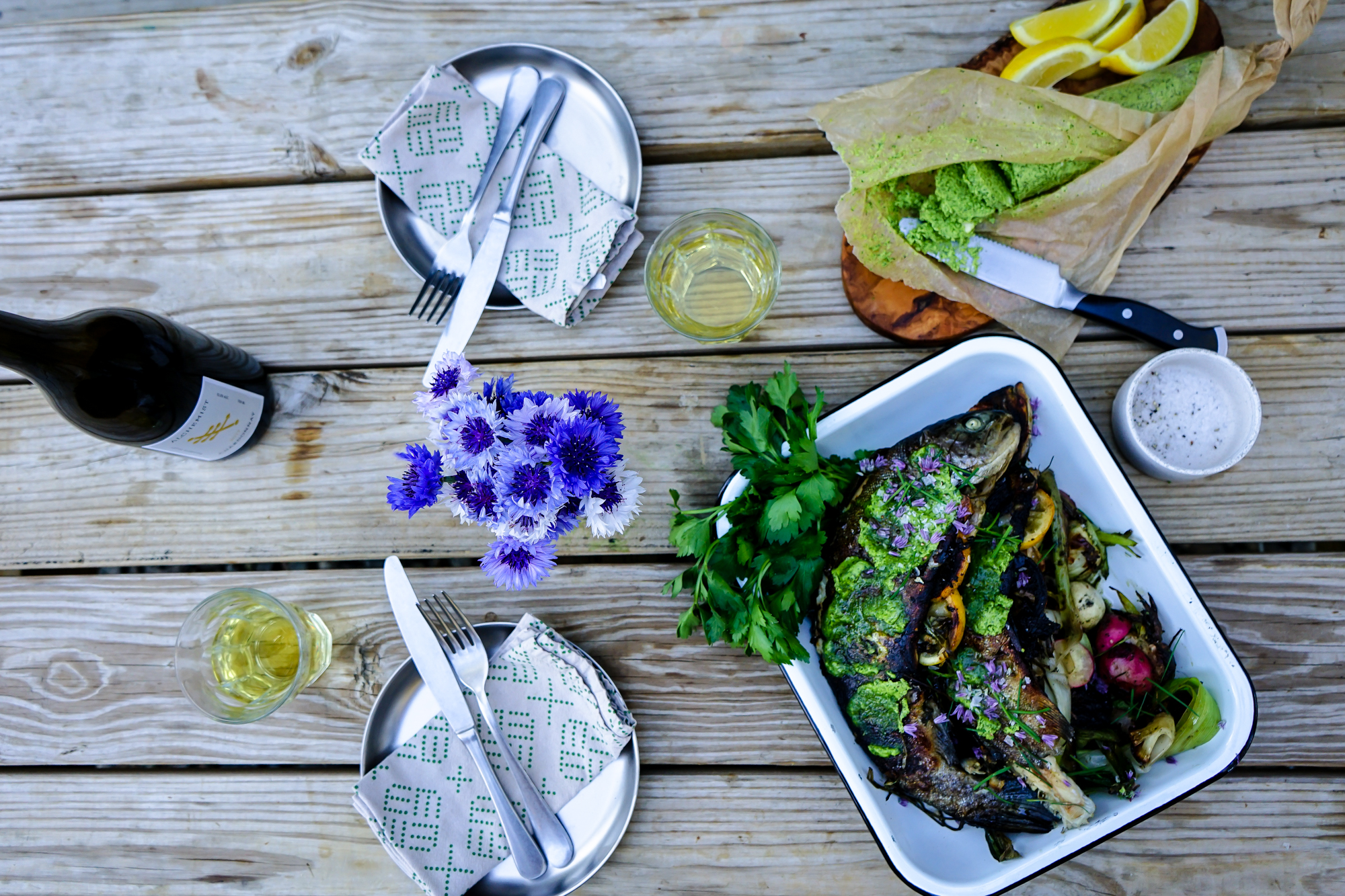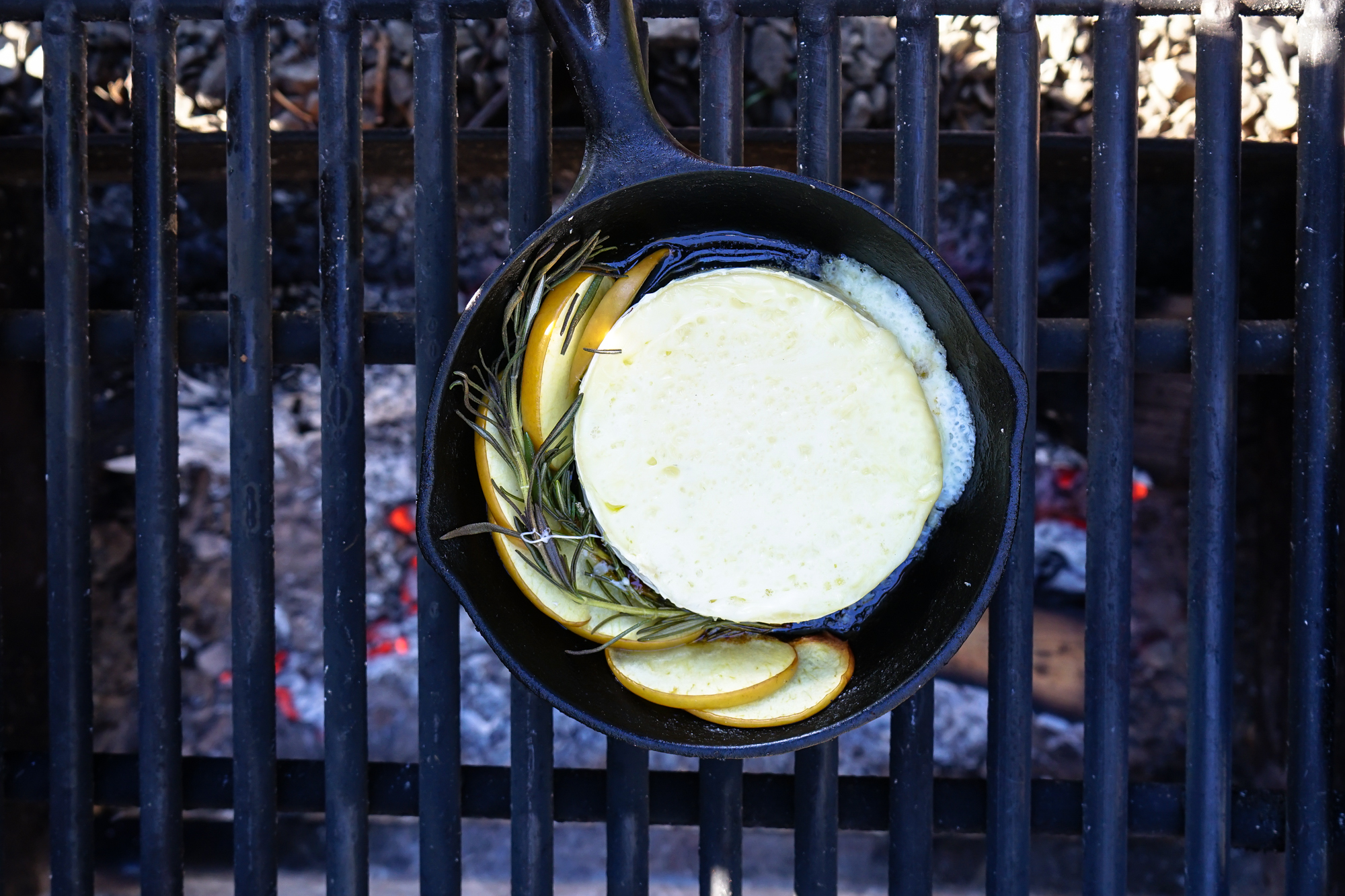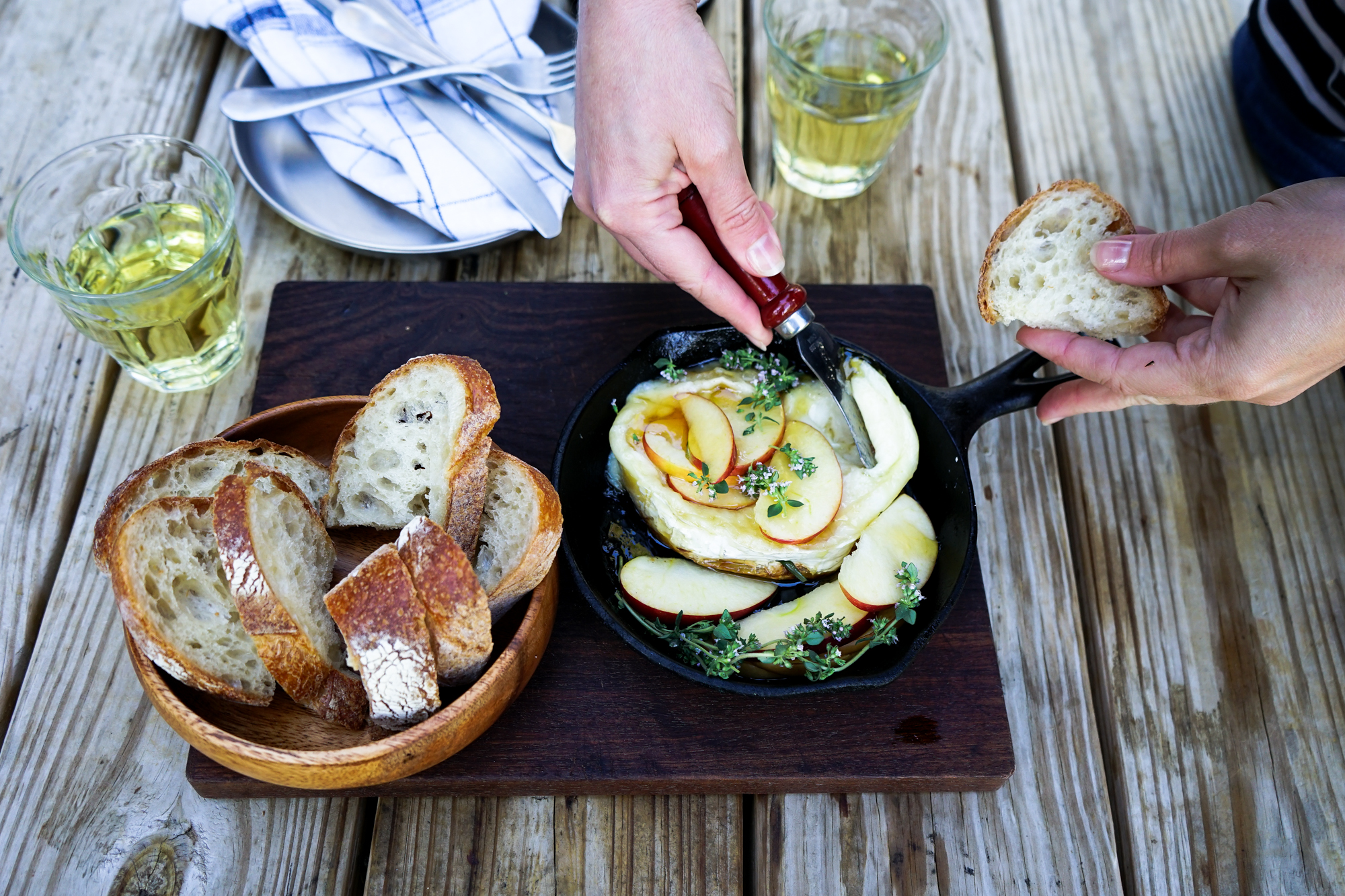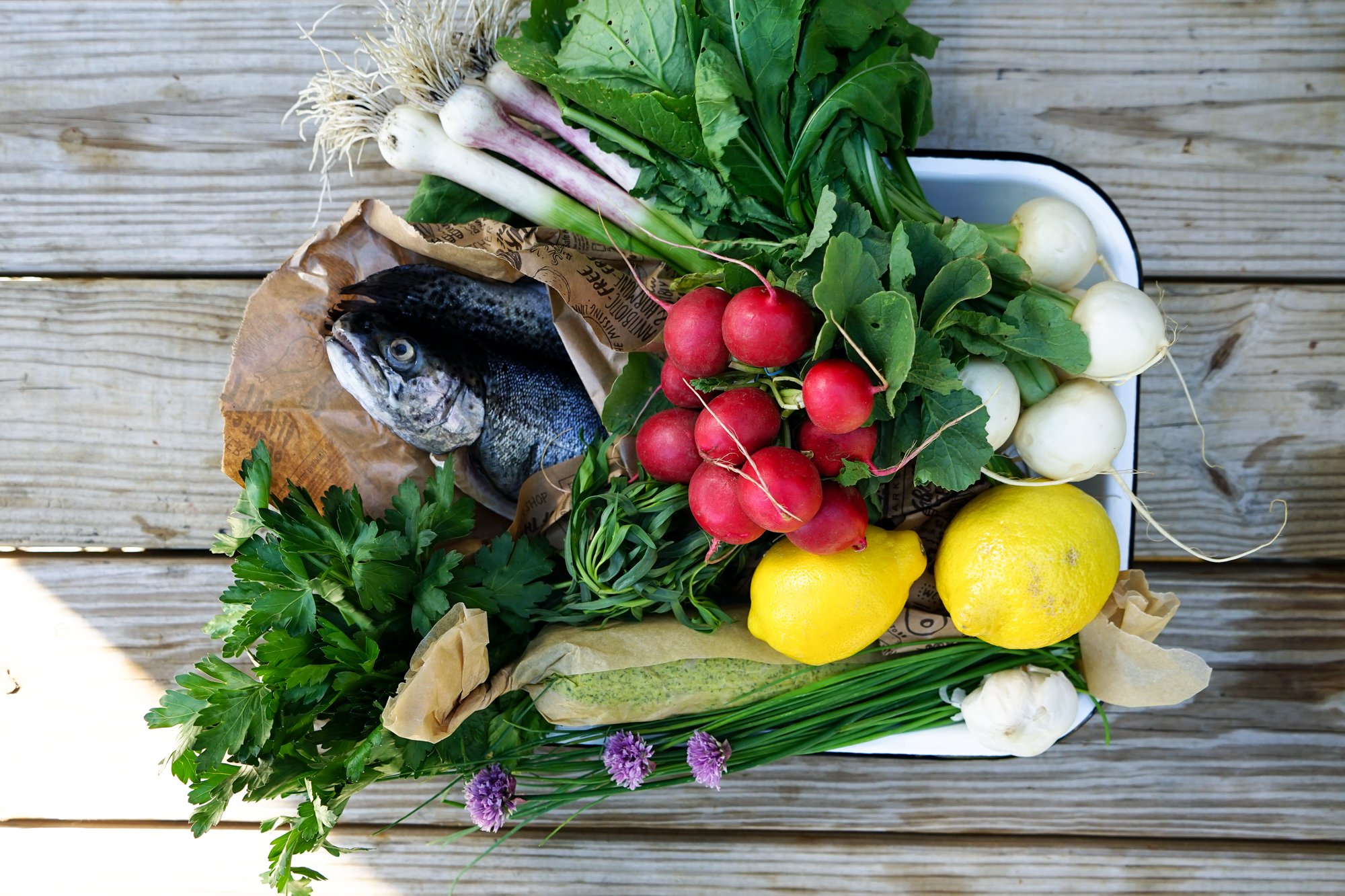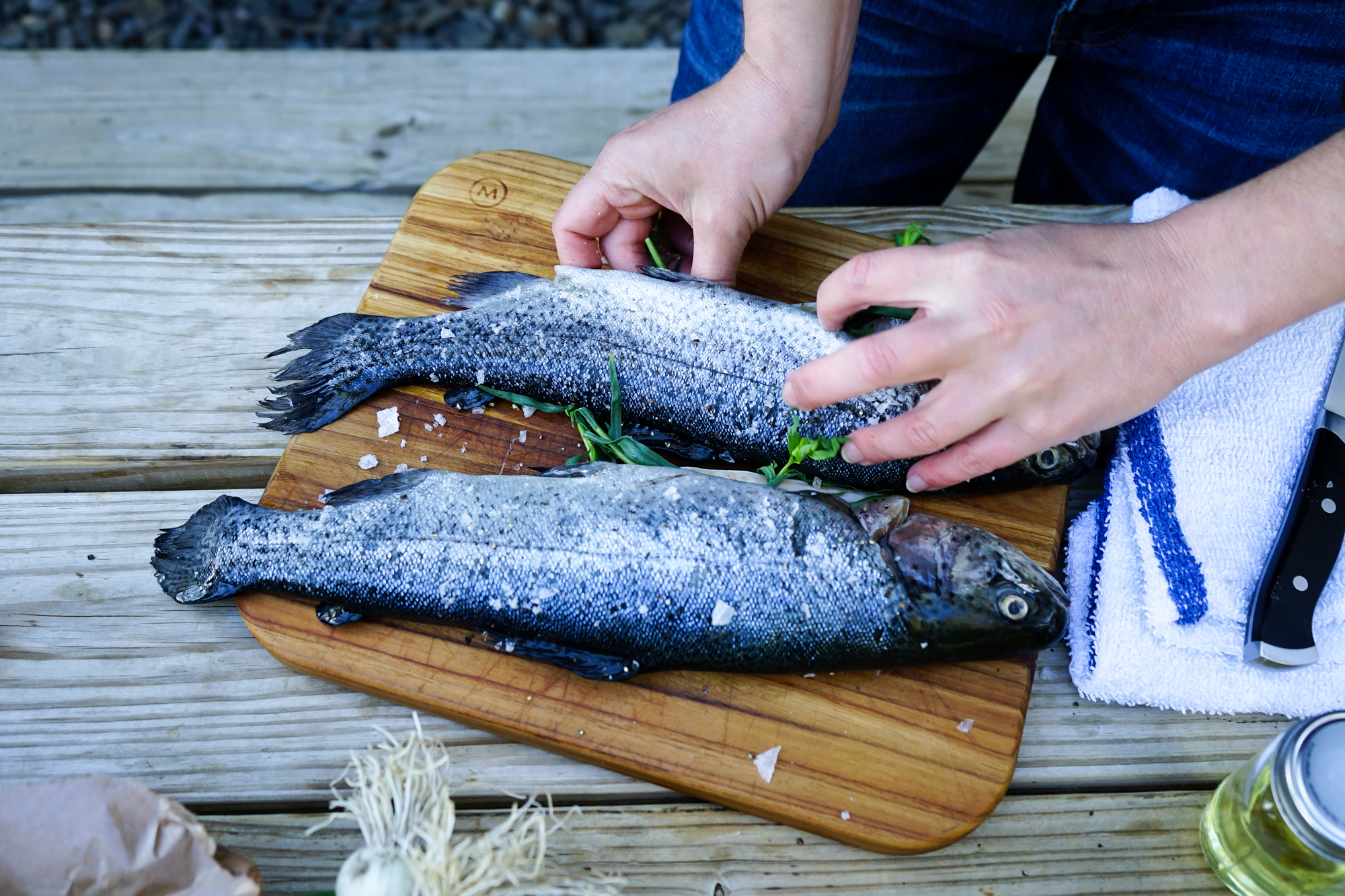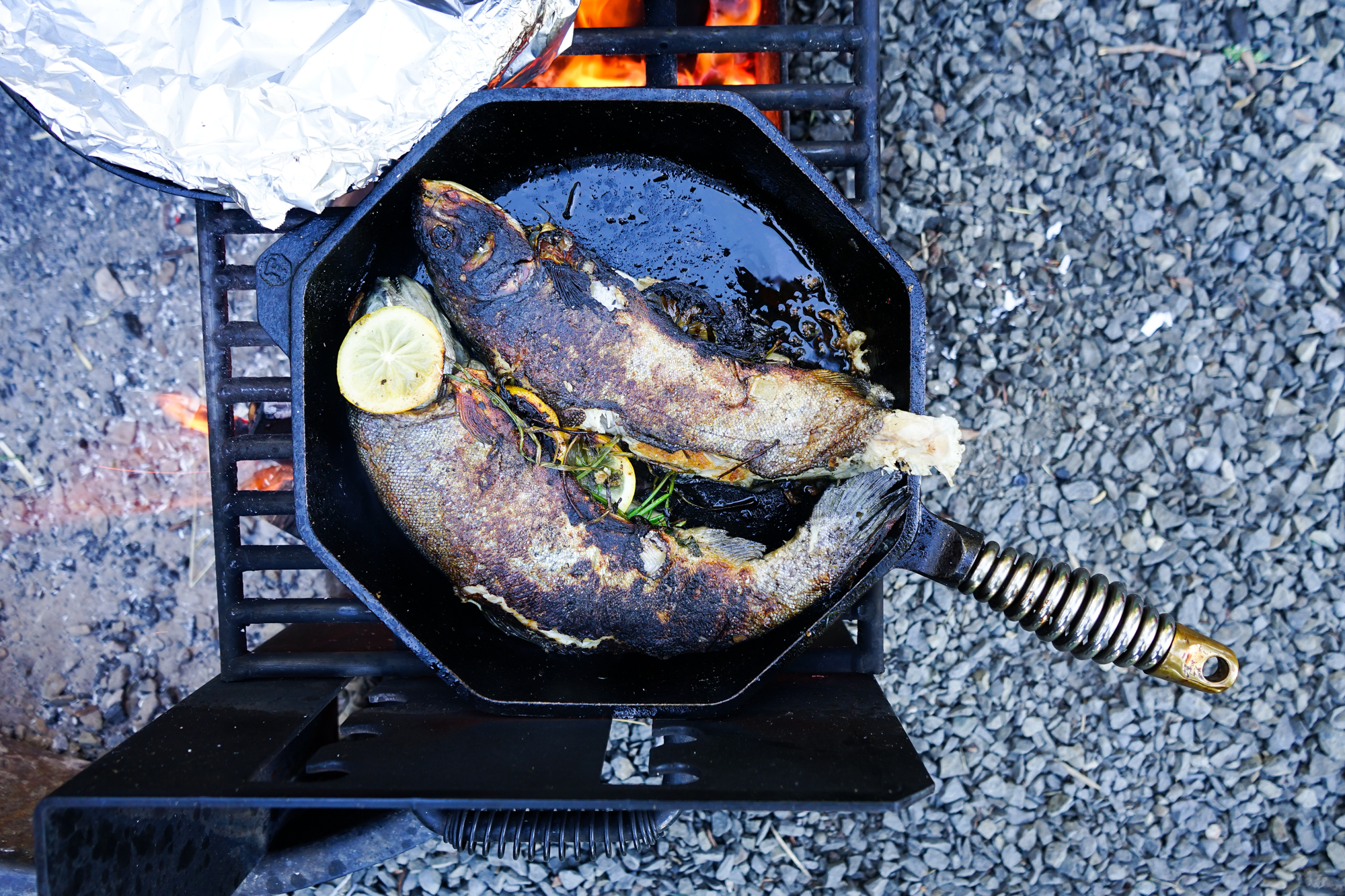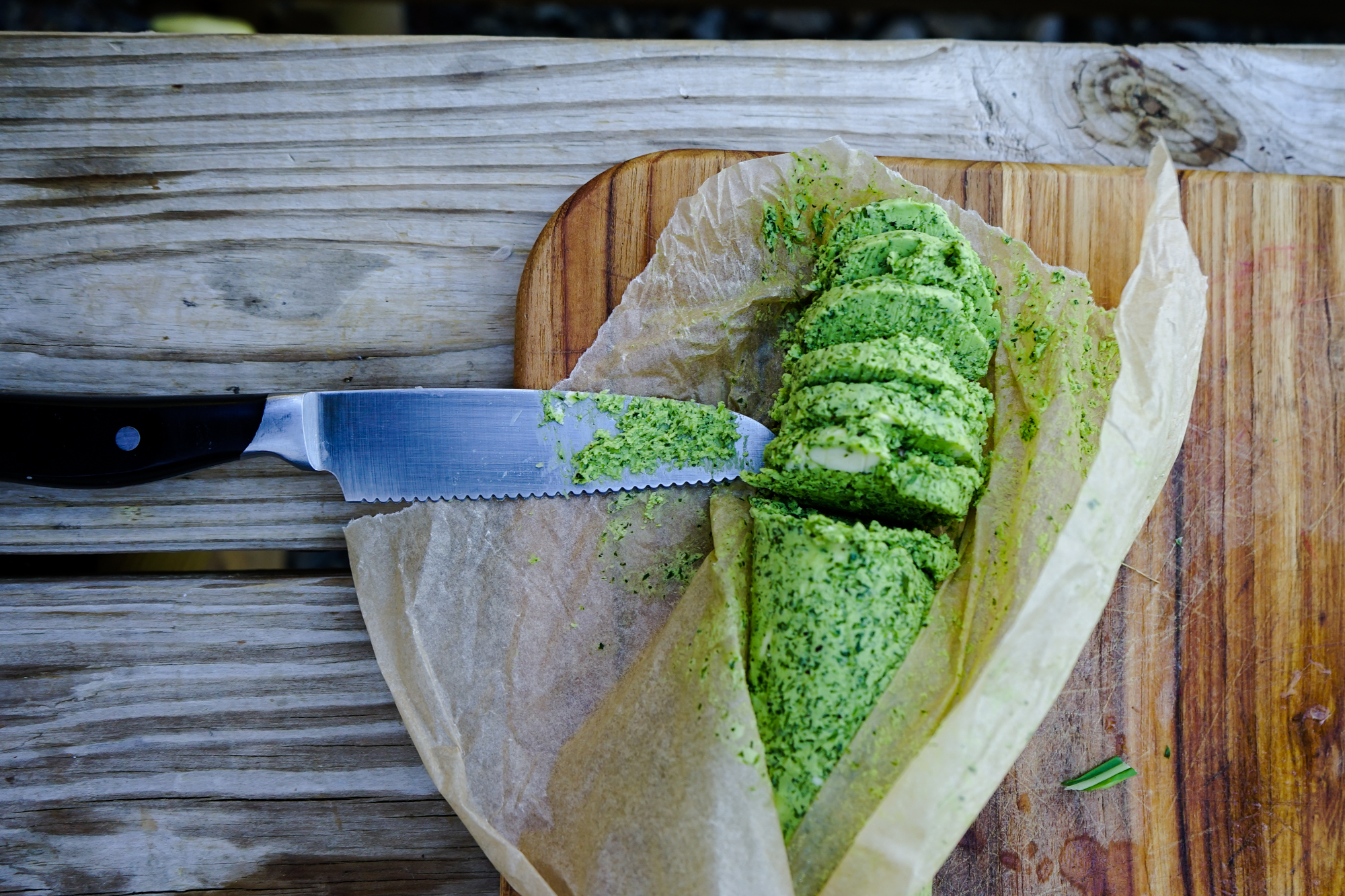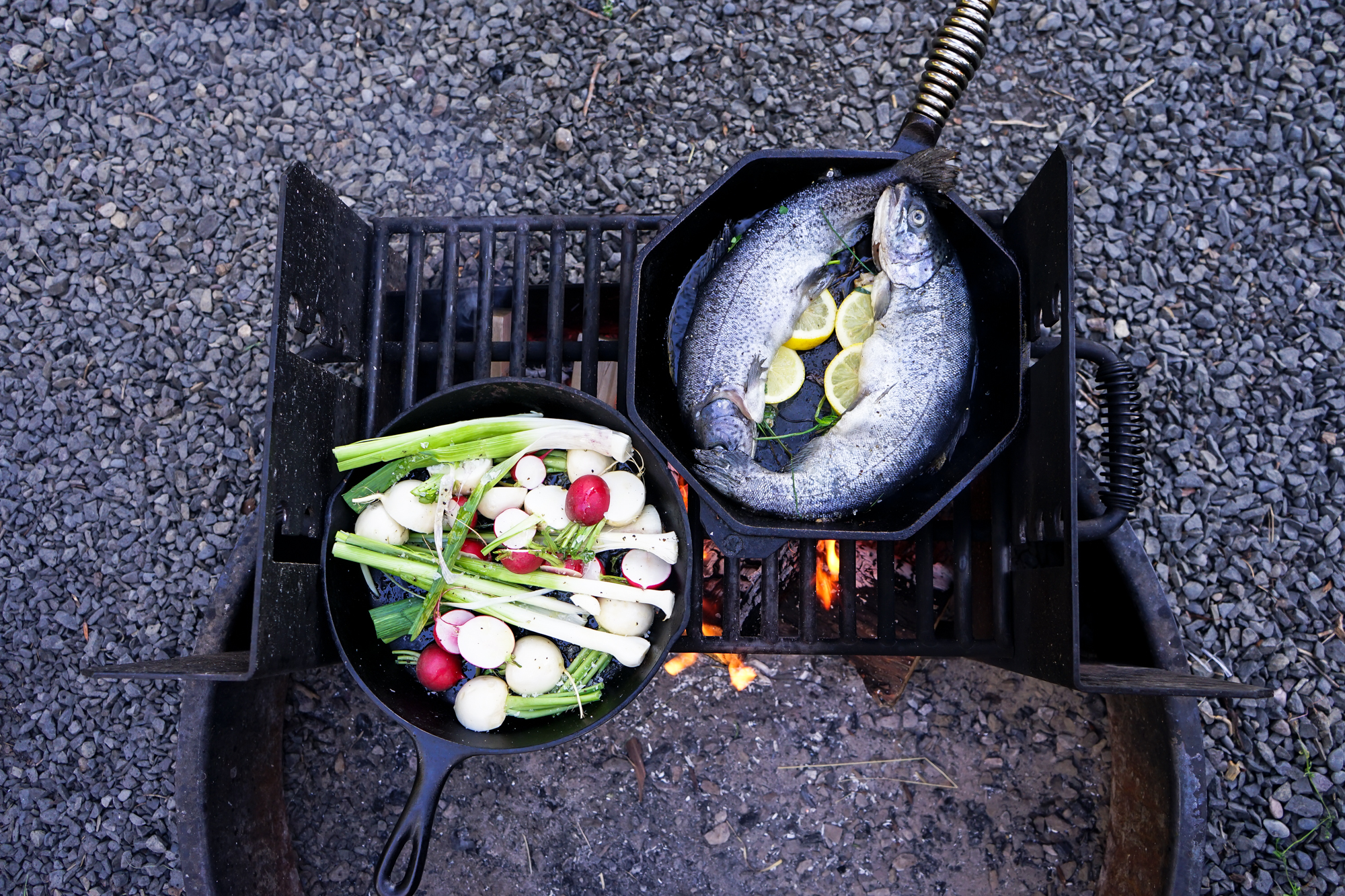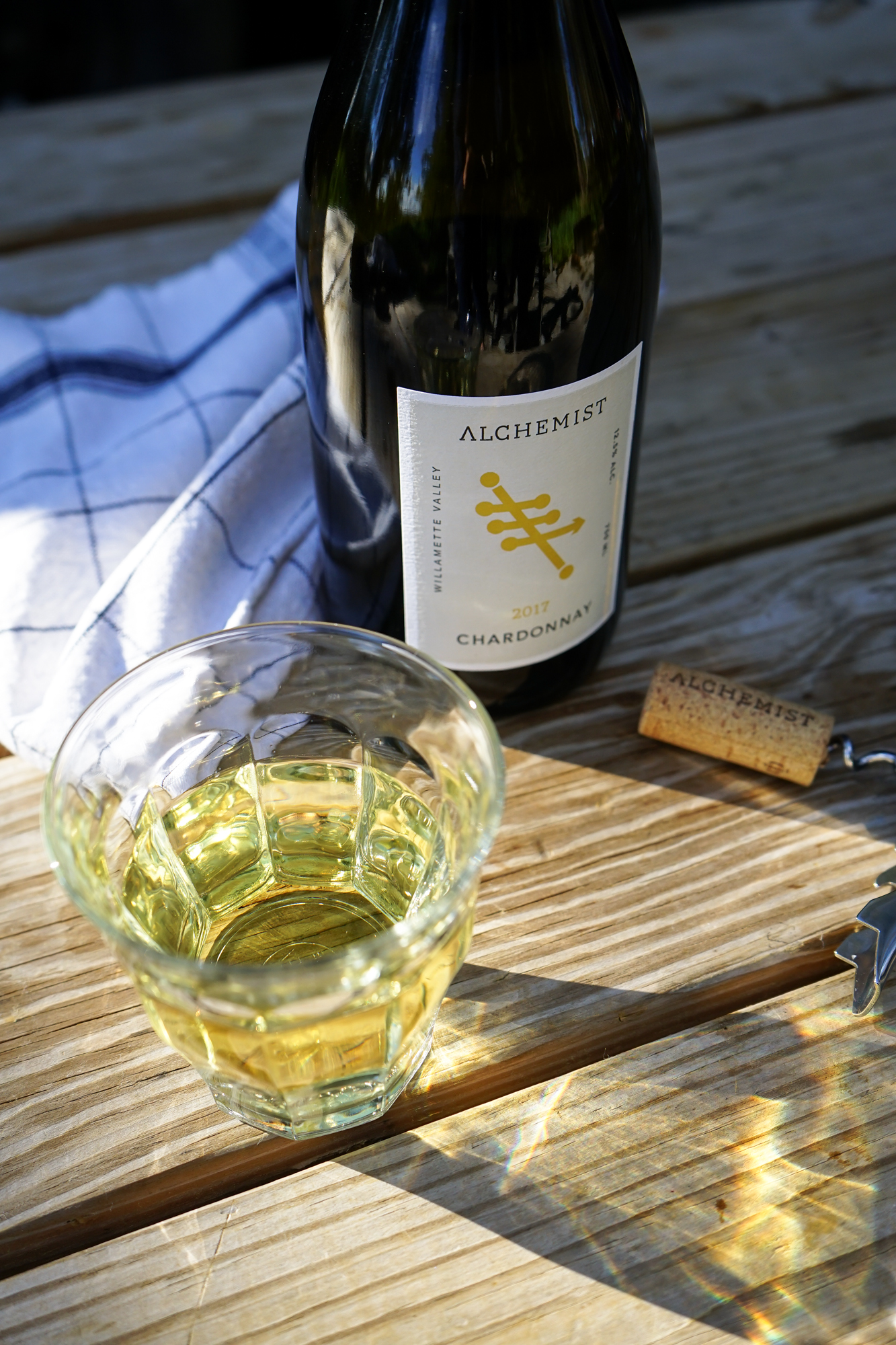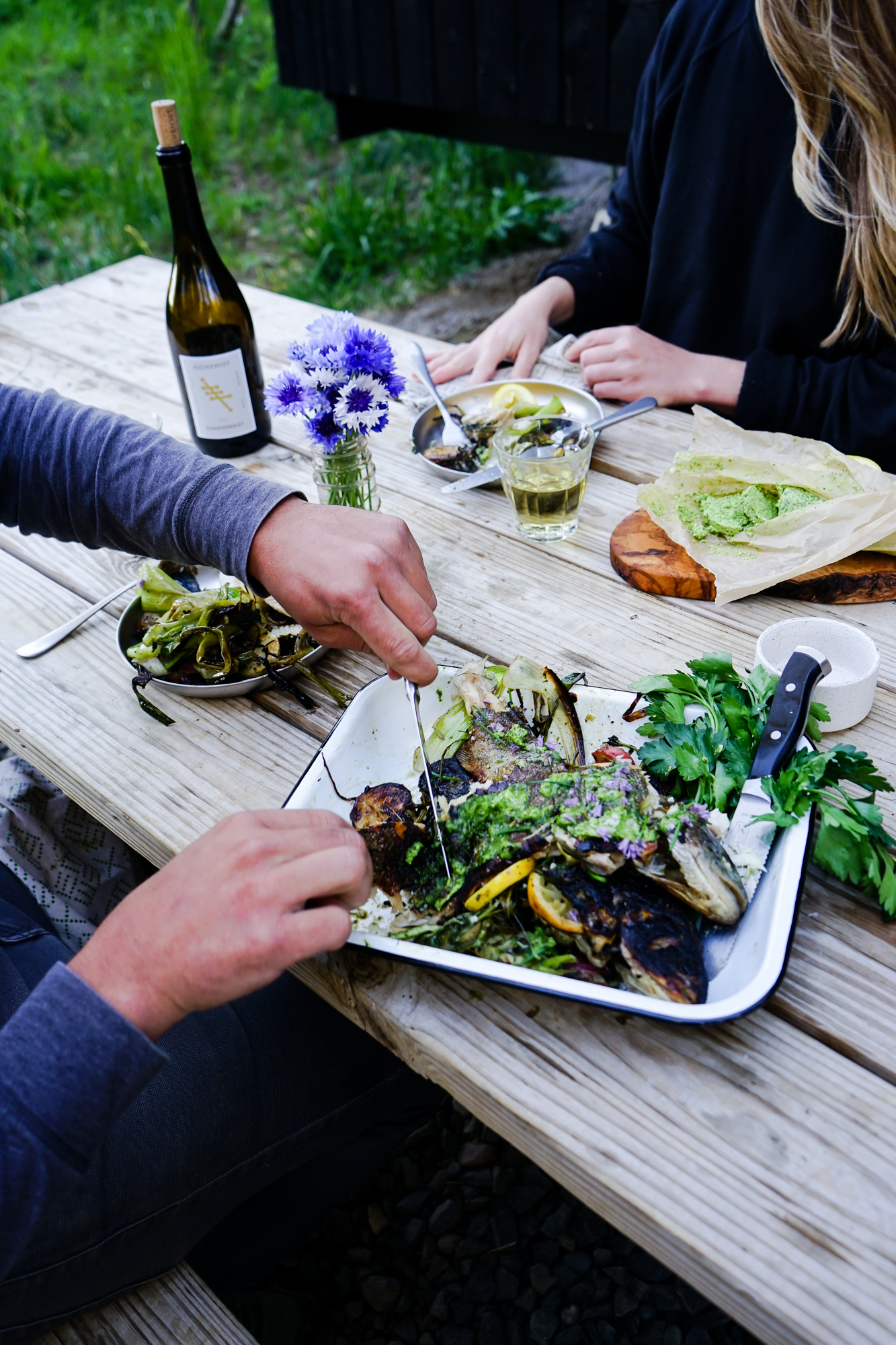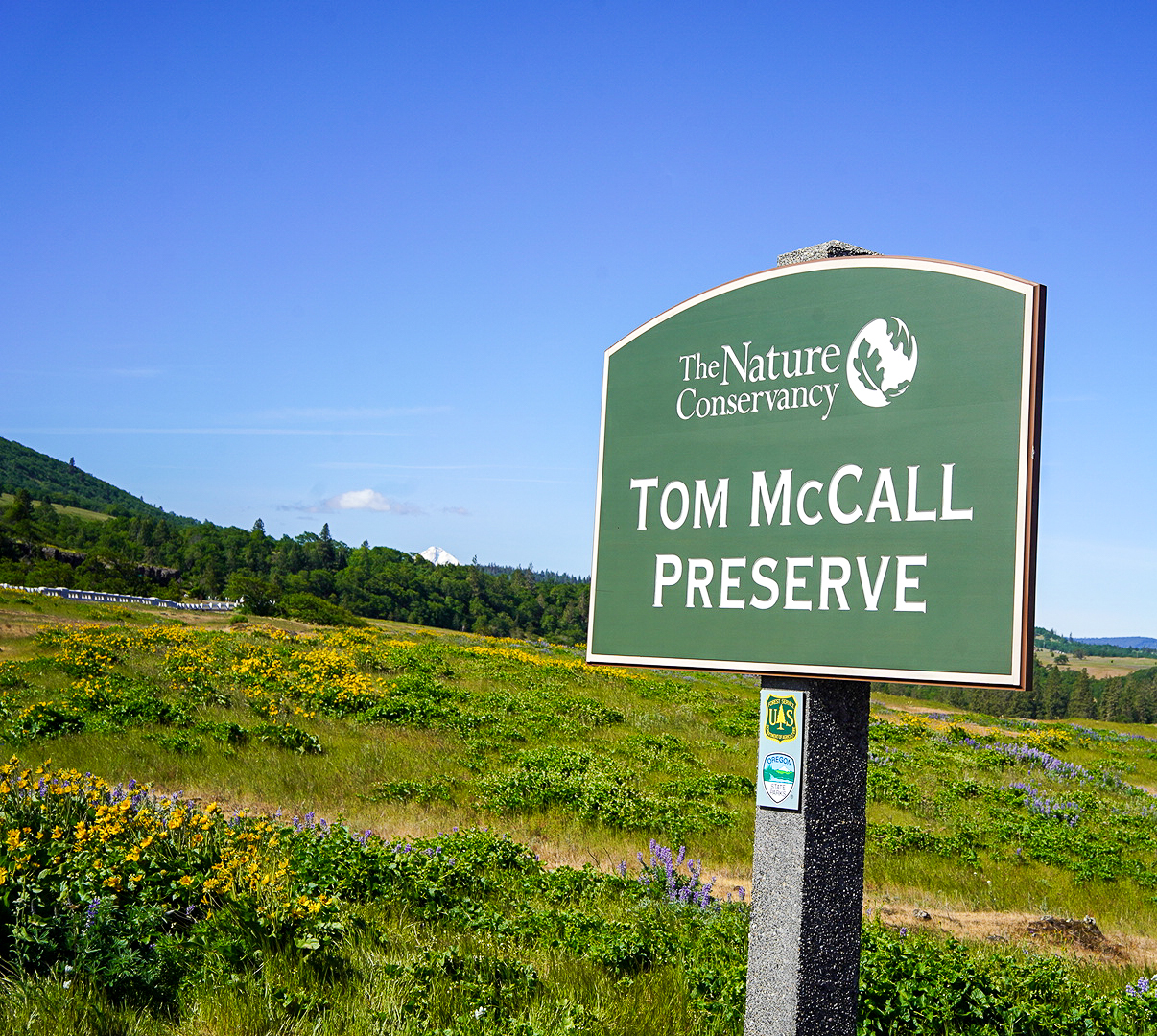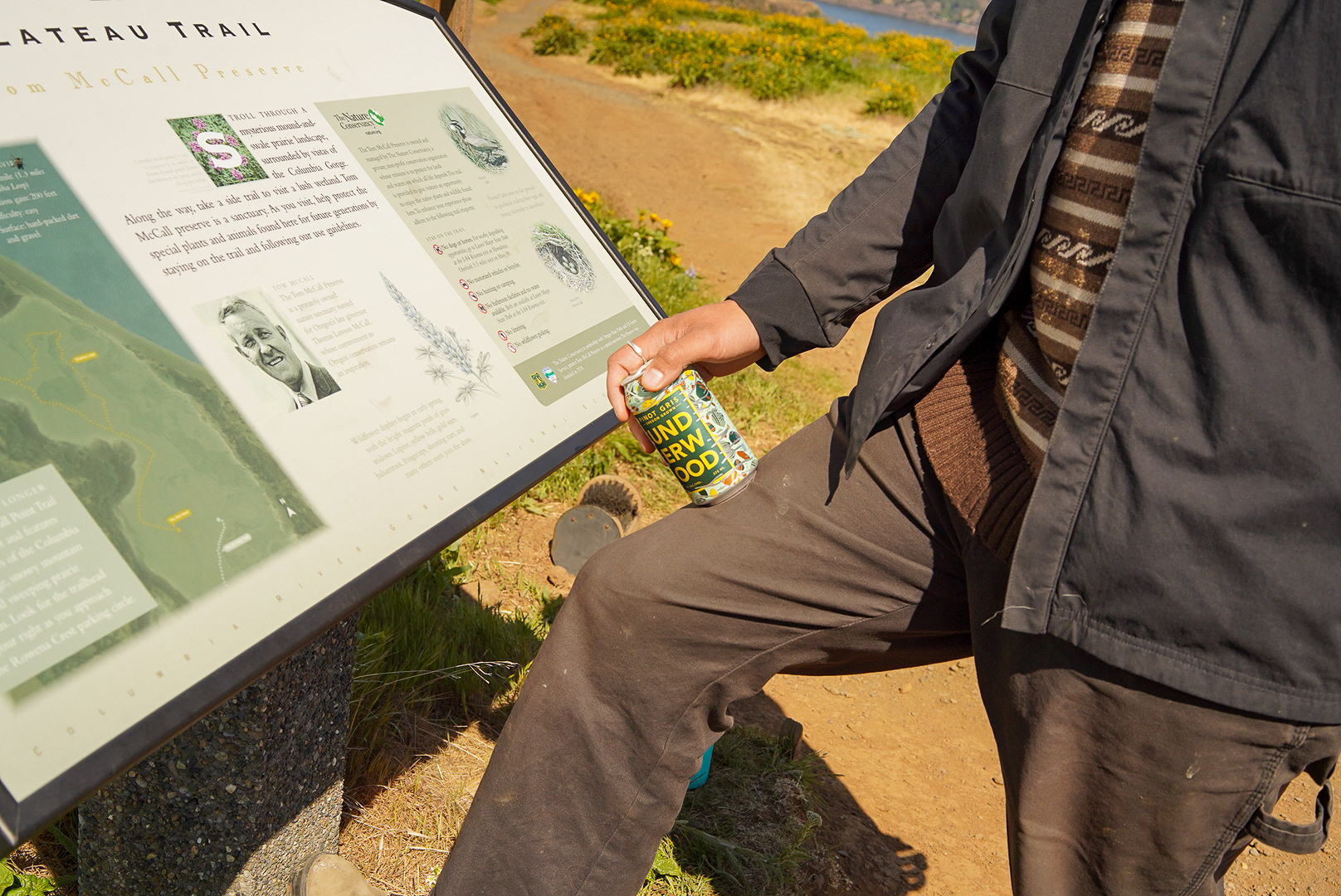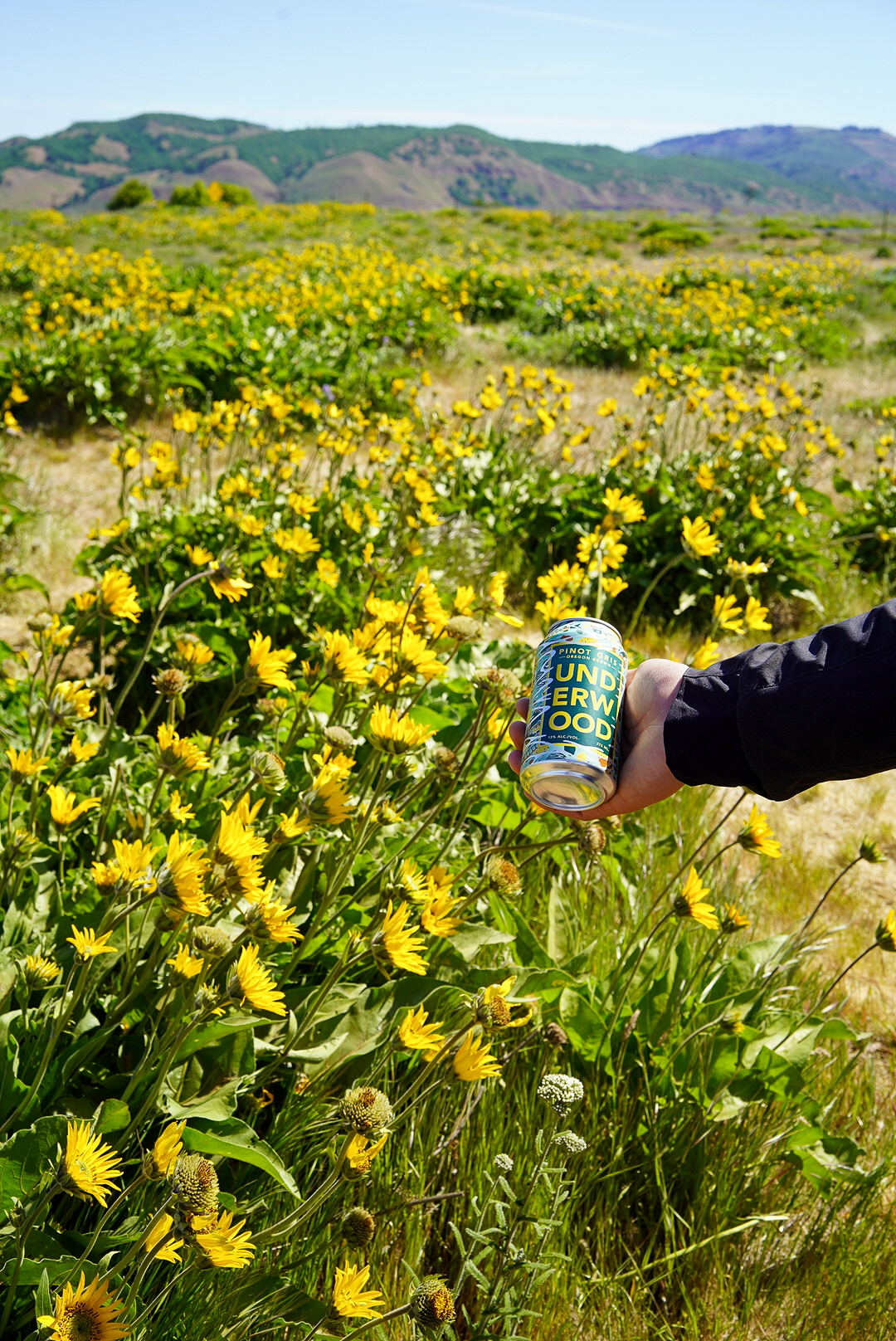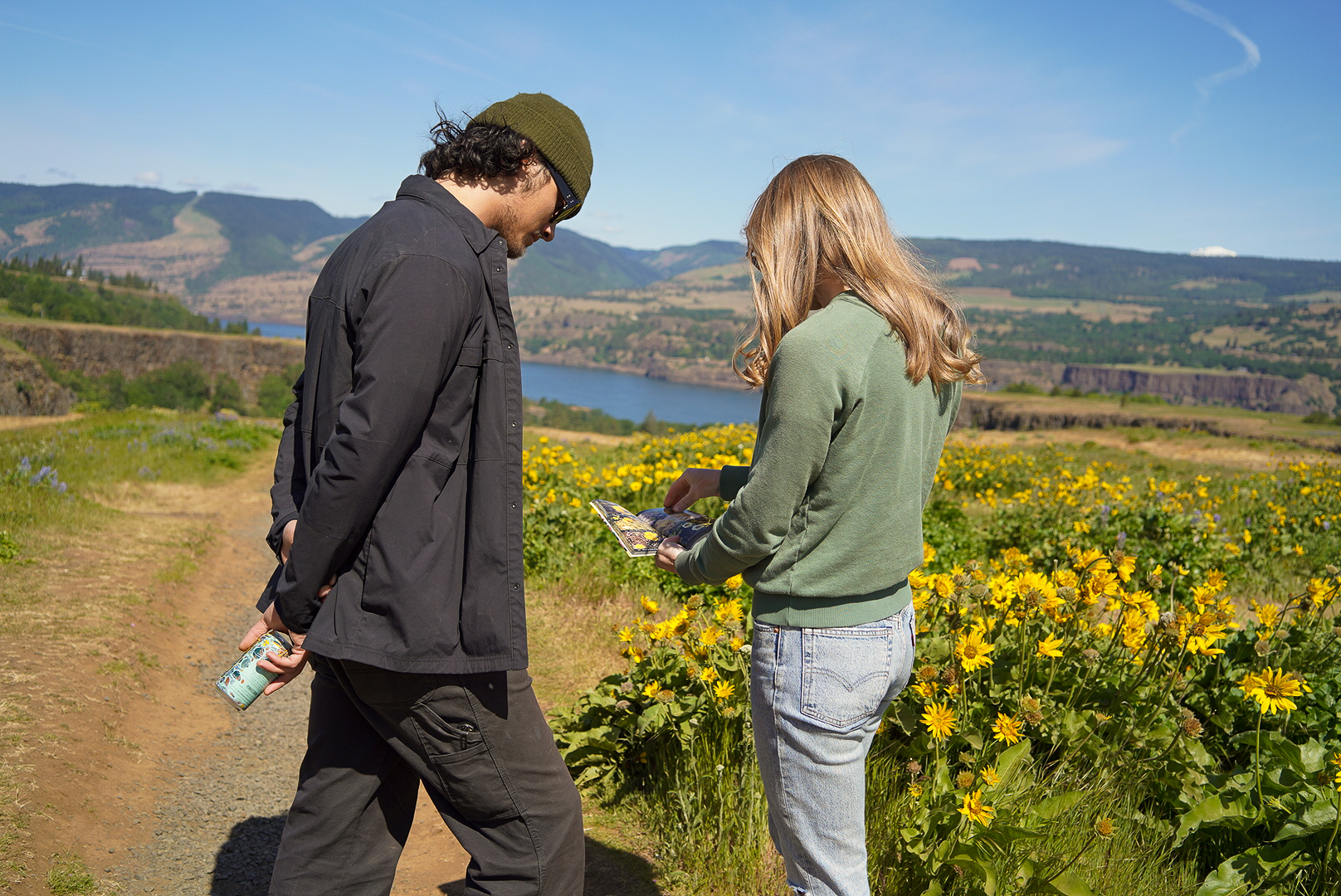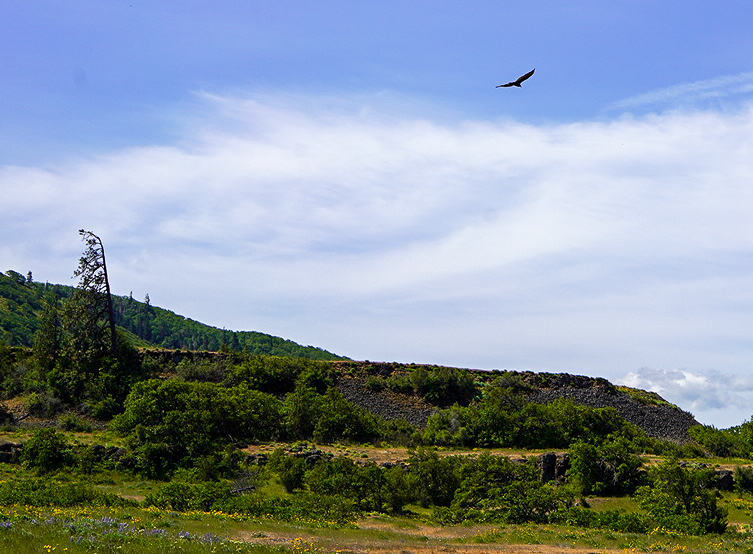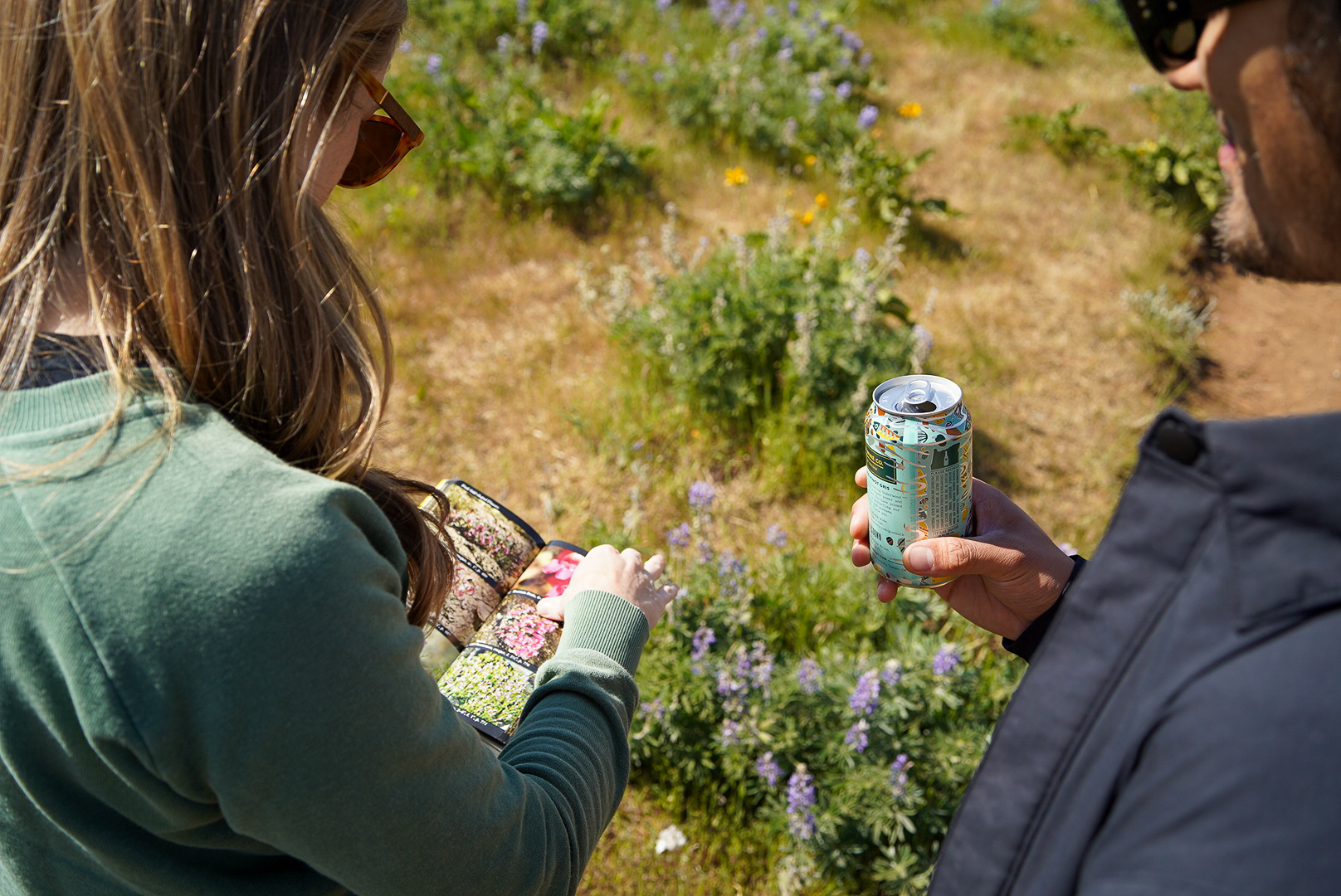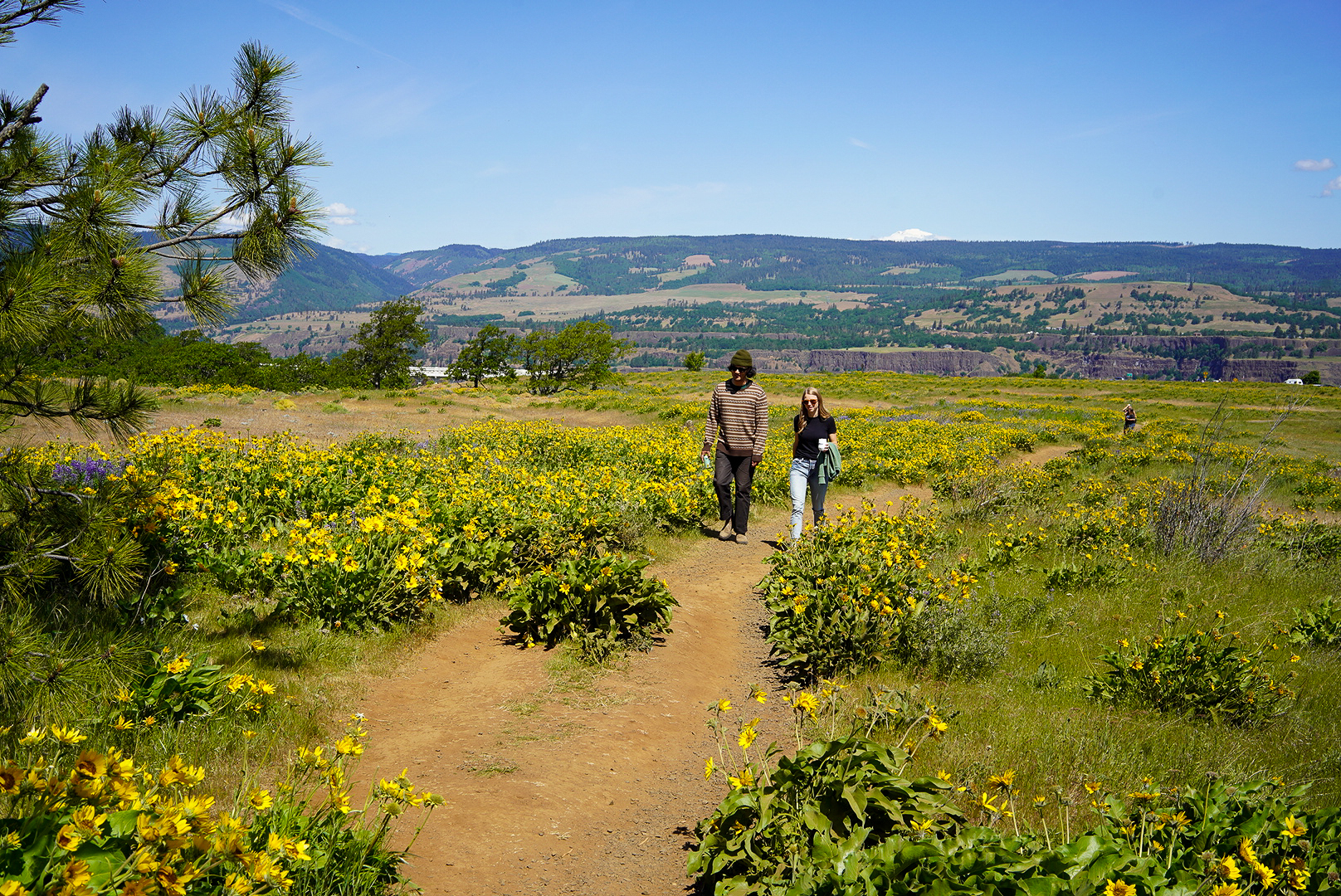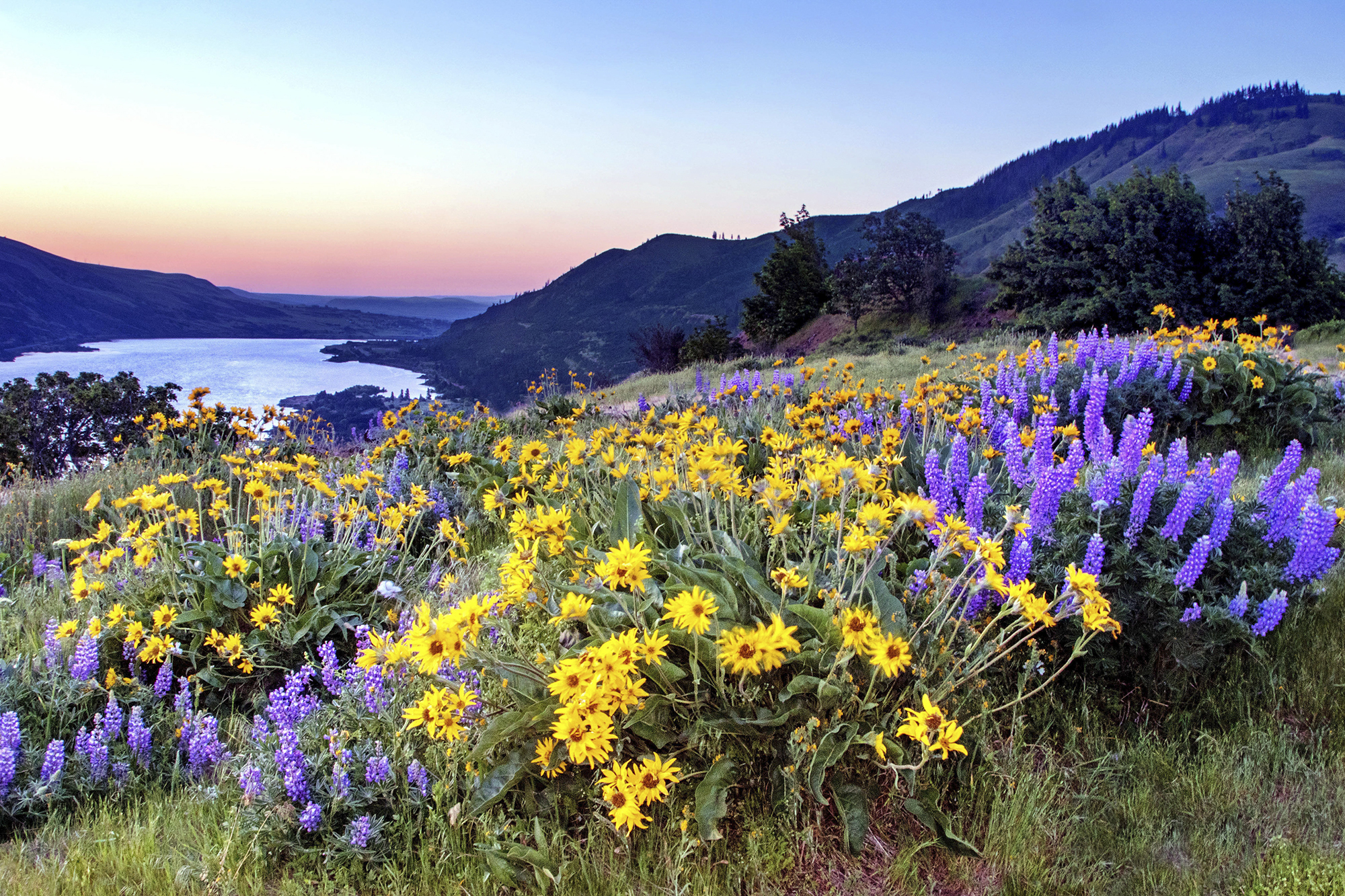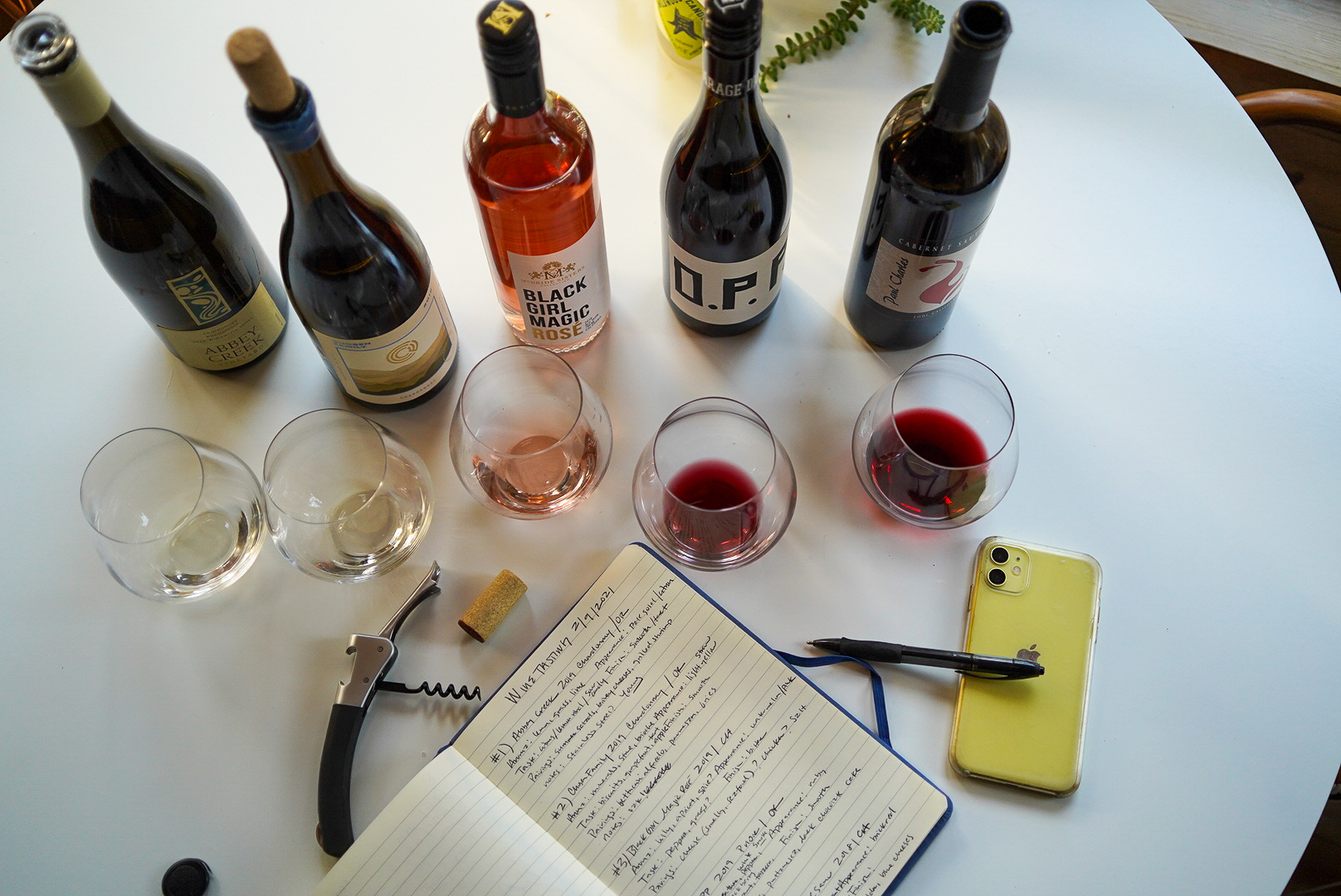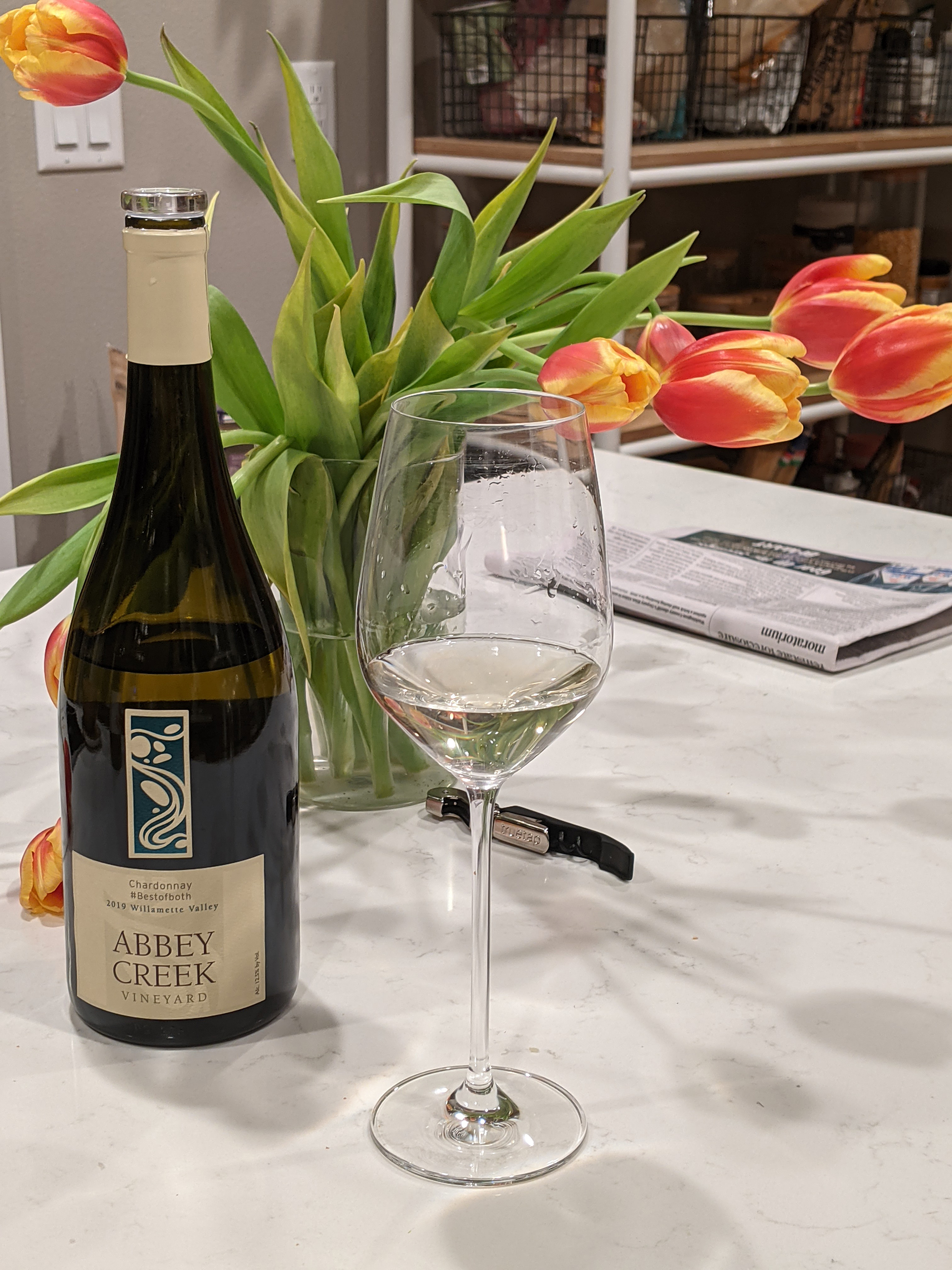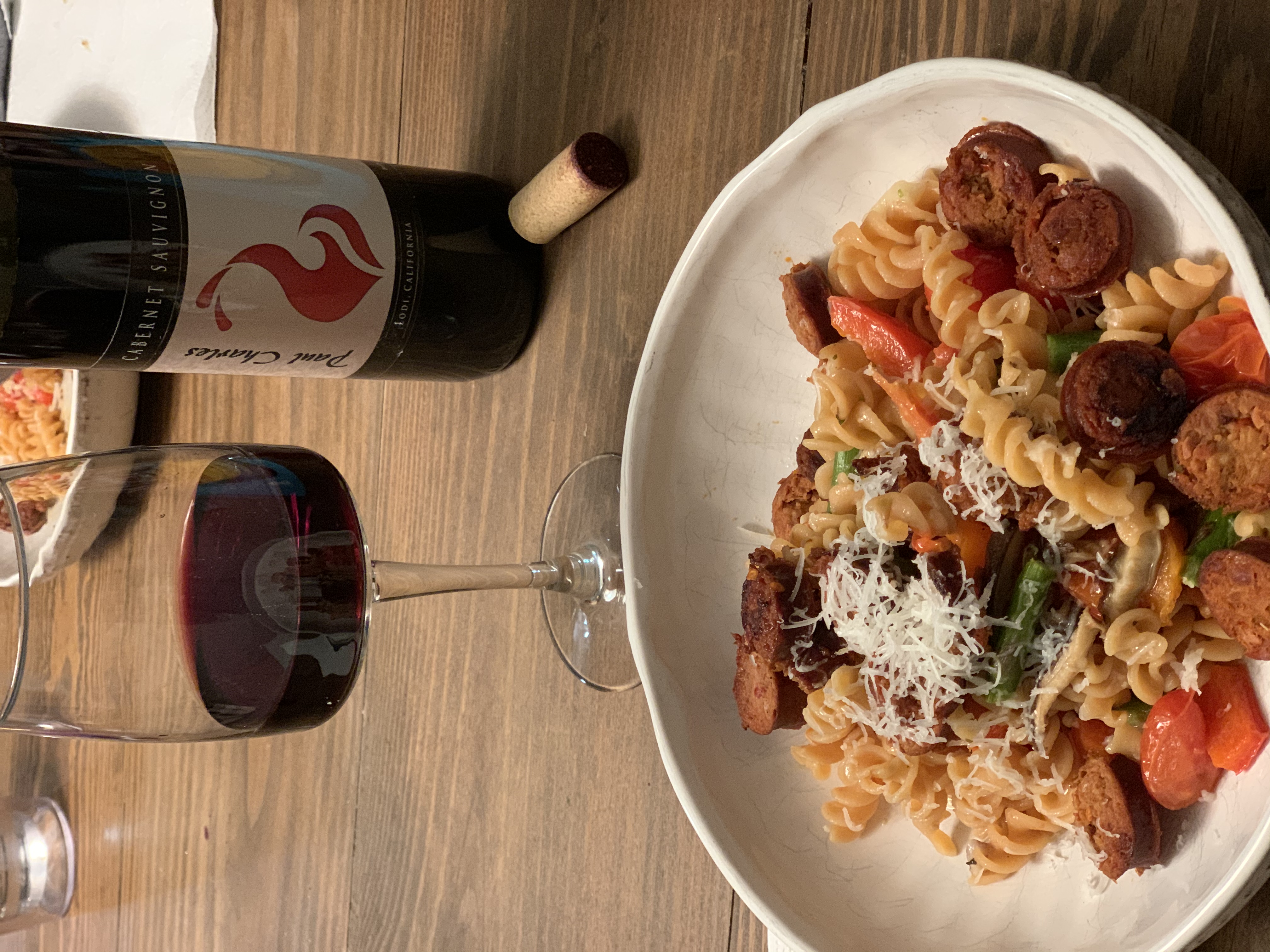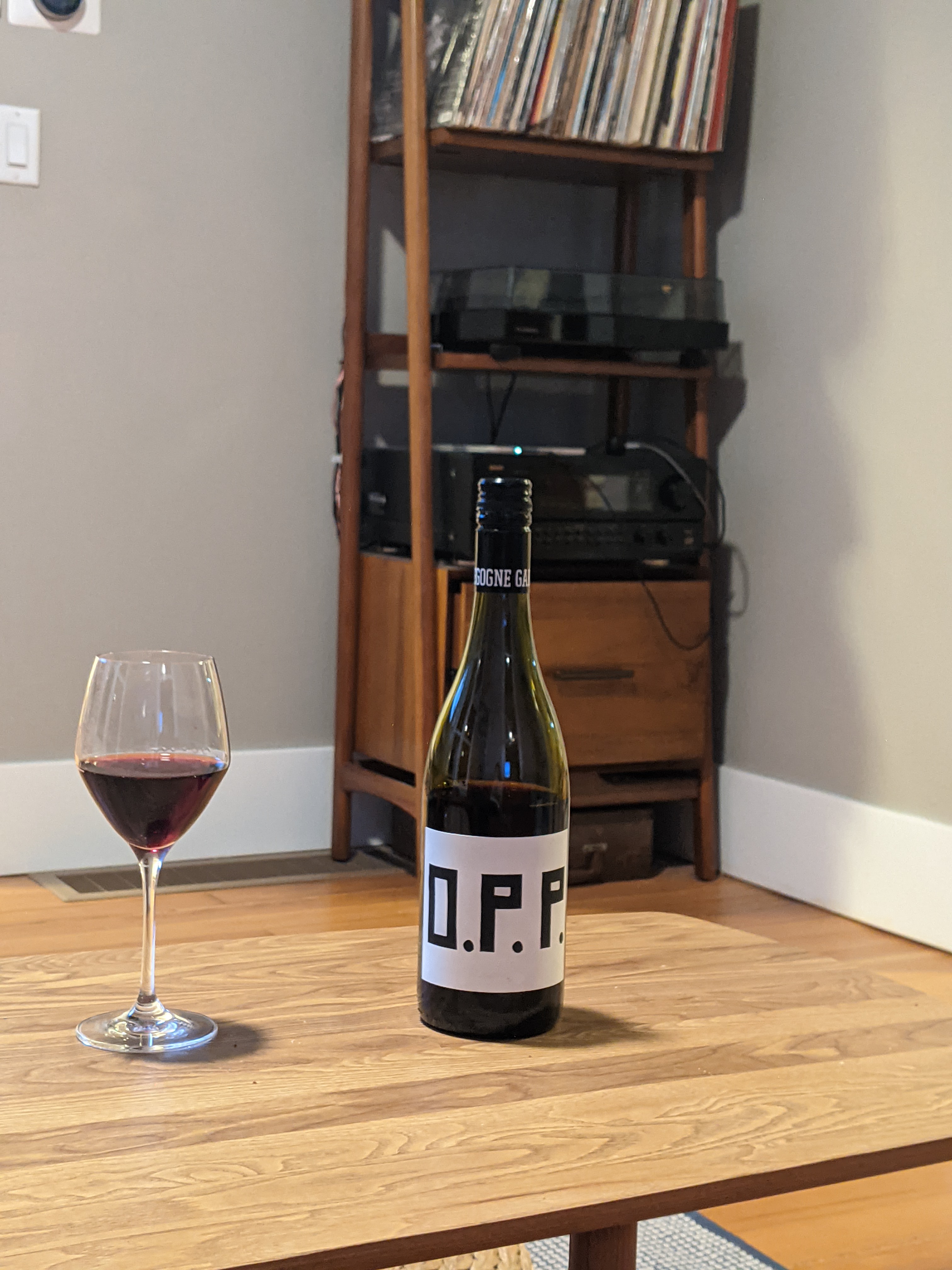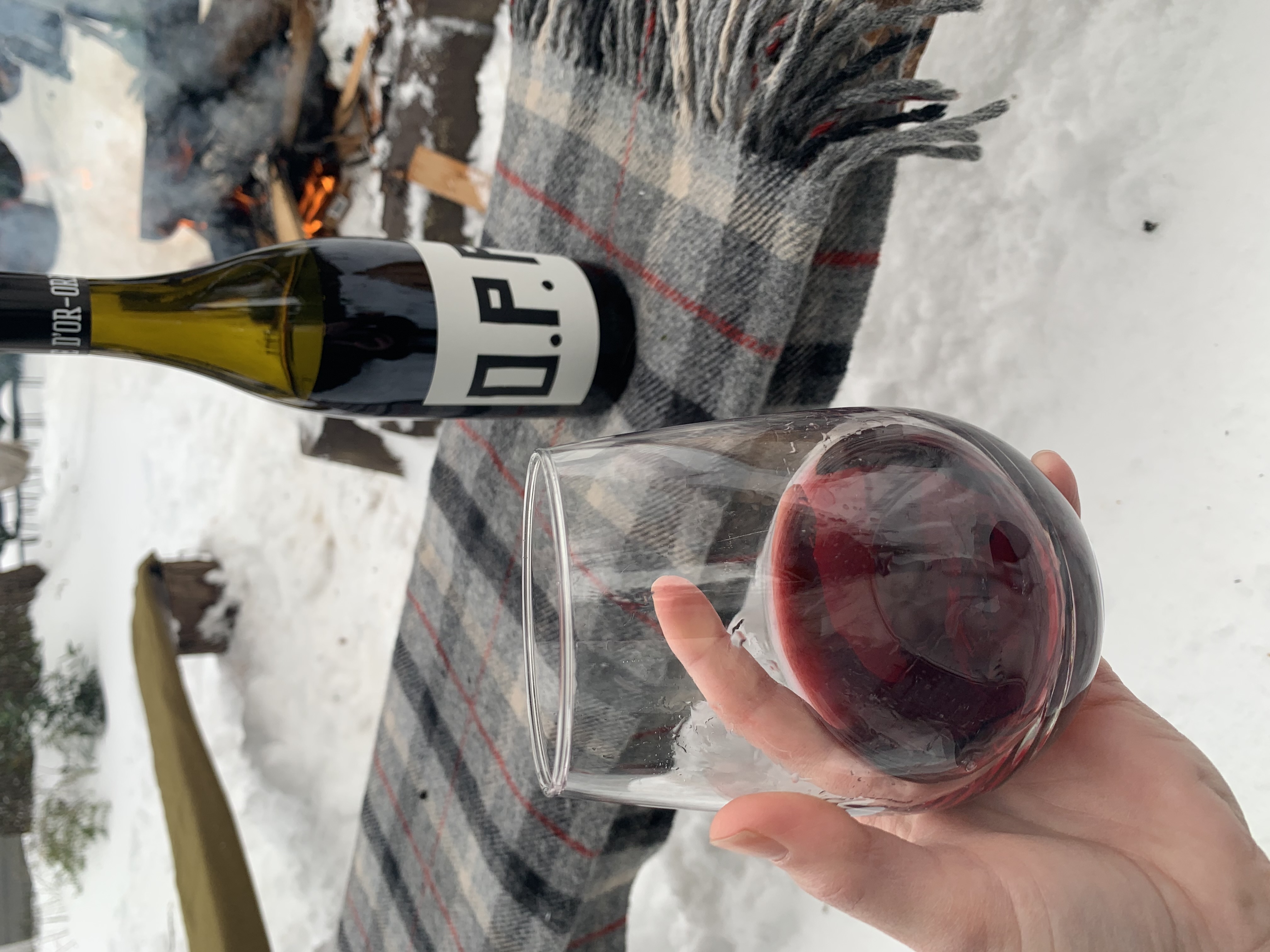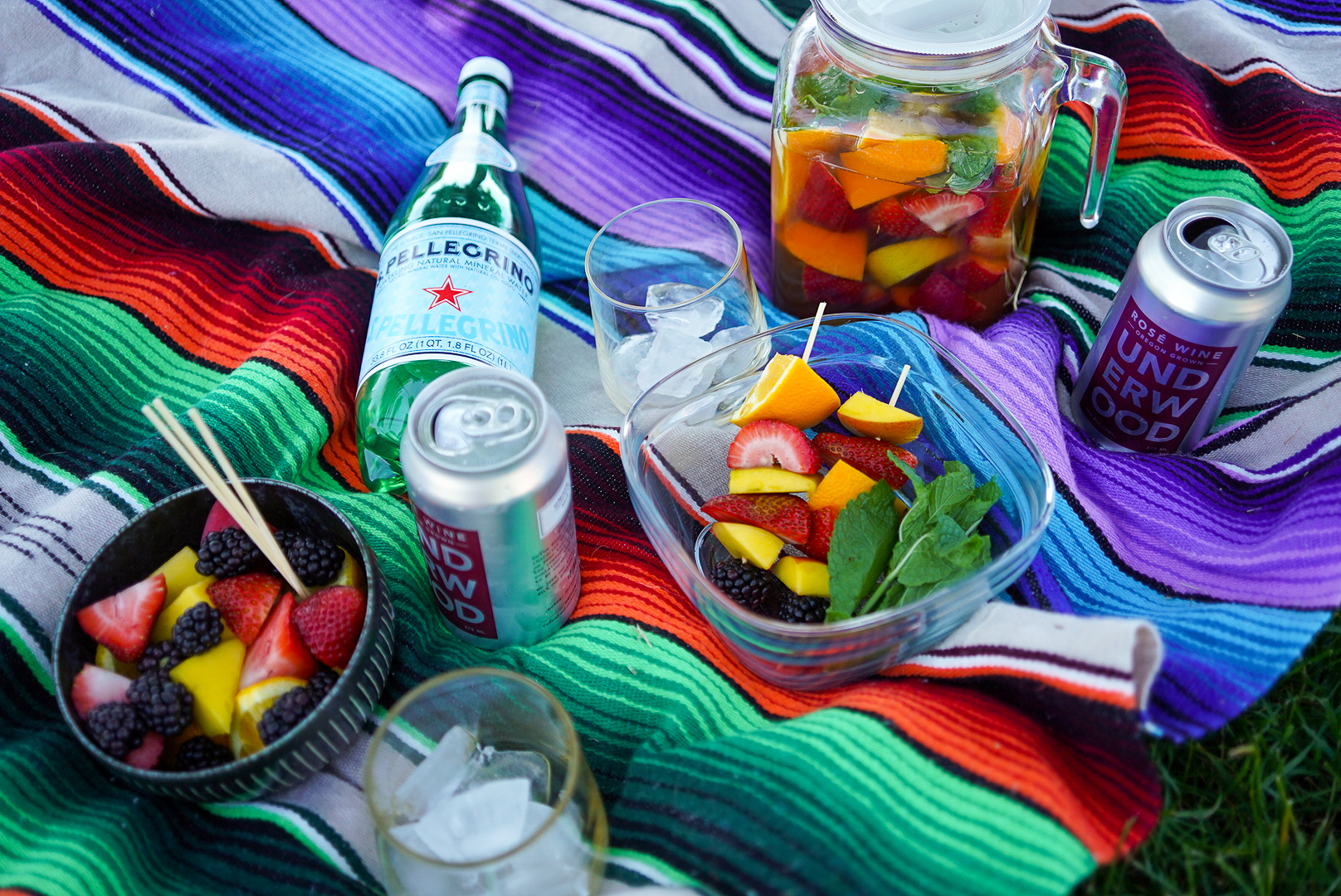
Summer is here and we are all about it. The days are longer, warmer, and full of hope as more and more of us are able to see our friends and family after a long year of trying to stay safe. So let’s celebrate with an easy, picnic ready Rosé Sangria! With fresh fruit, coconut sugar, and Grand Marnier, this simple and refreshing sangria is sure to be a favorite all summer long. We like to pair this recipe with a good friend, a picnic blanket, and a shady spot in our local park.
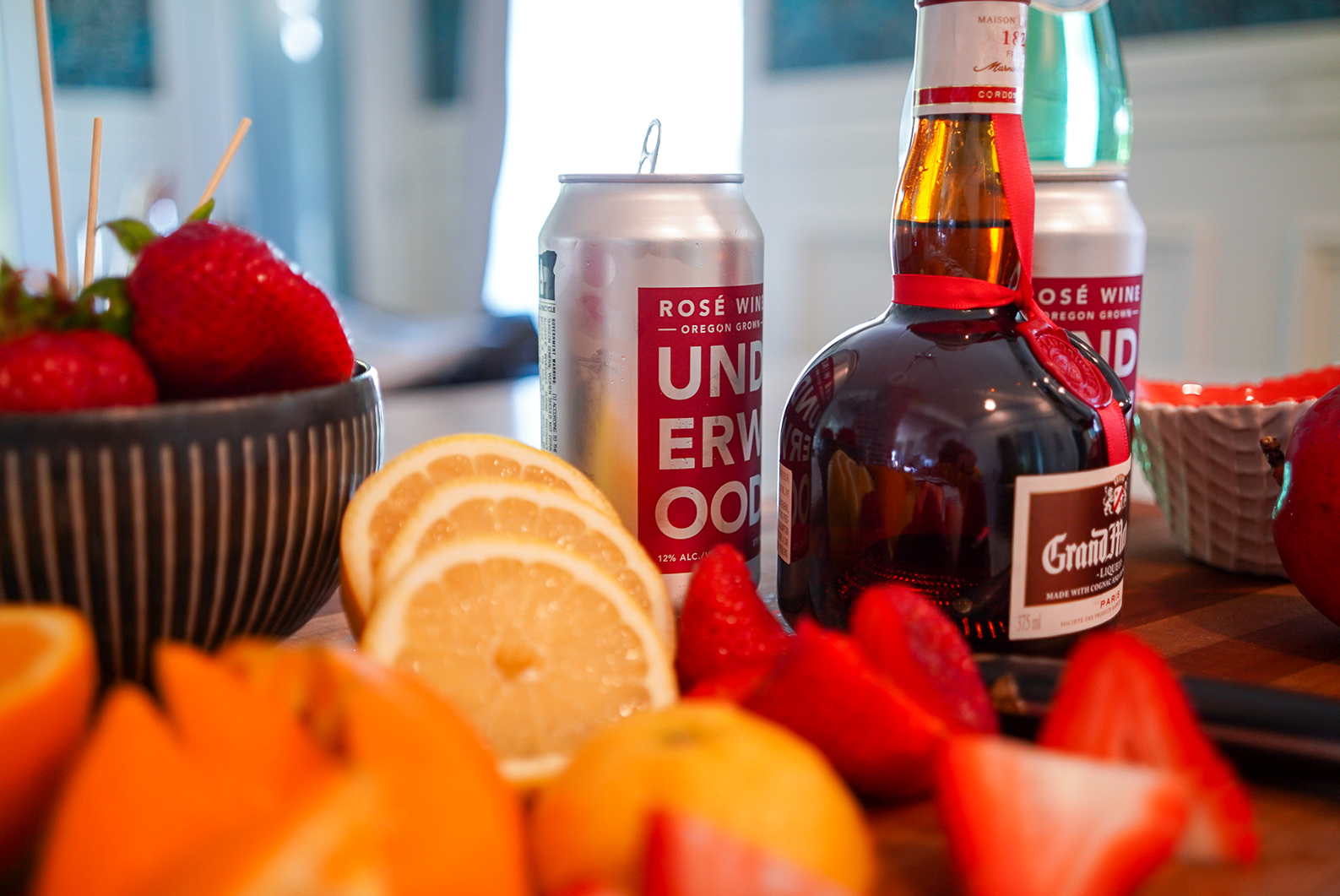
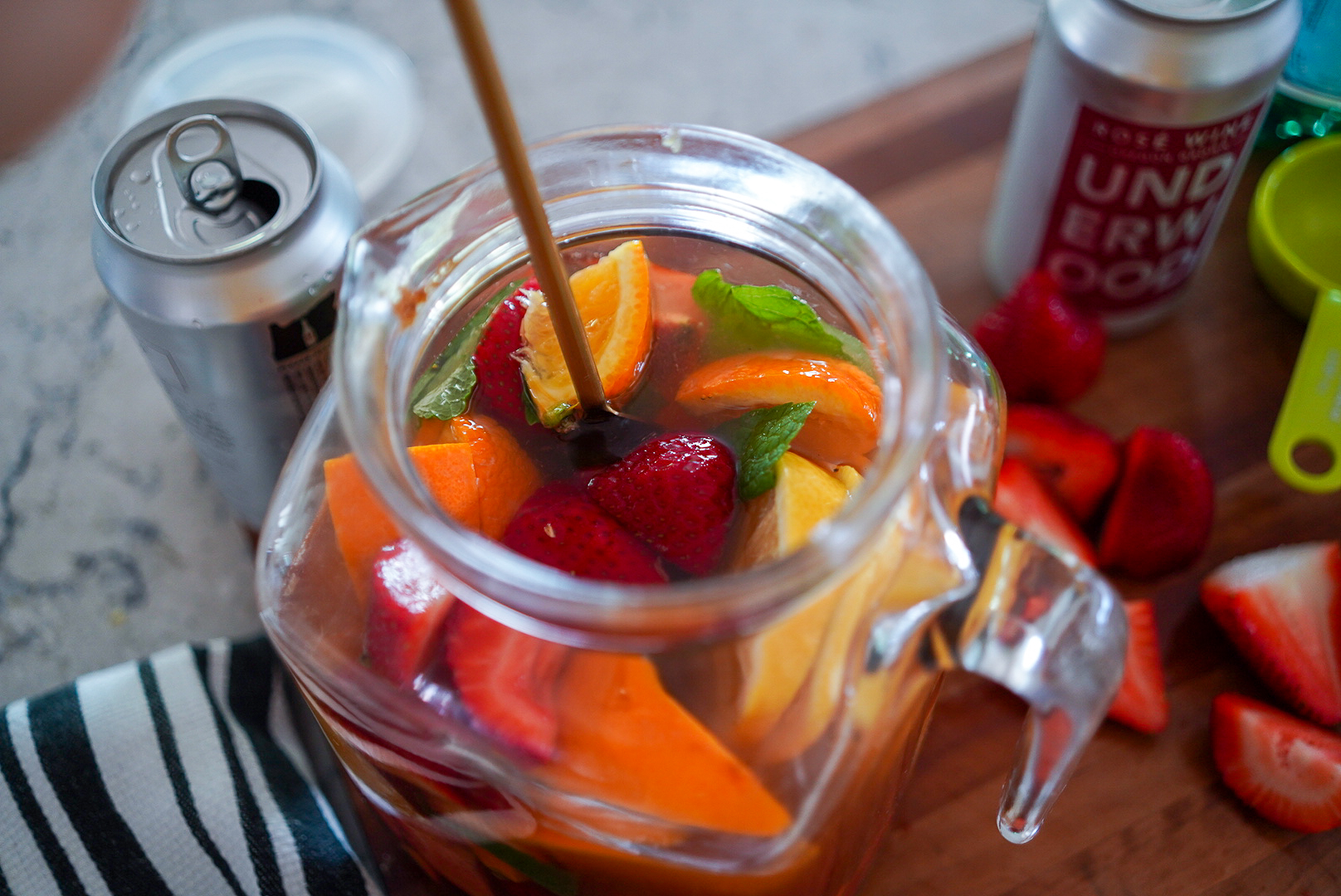
Ingredients:
1 orange, cut into wedges
2 cups strawberries, halved
2 tablespoons coconut sugar
2 cans of chilled Underwood Rosé
1/3 cup Grand Marnier
1 handful of fresh mint leaves
1 lemon, sliced
1 mango, peeled & cubed
1/2 cup blackberries
Sparkling water for serving
Skewers
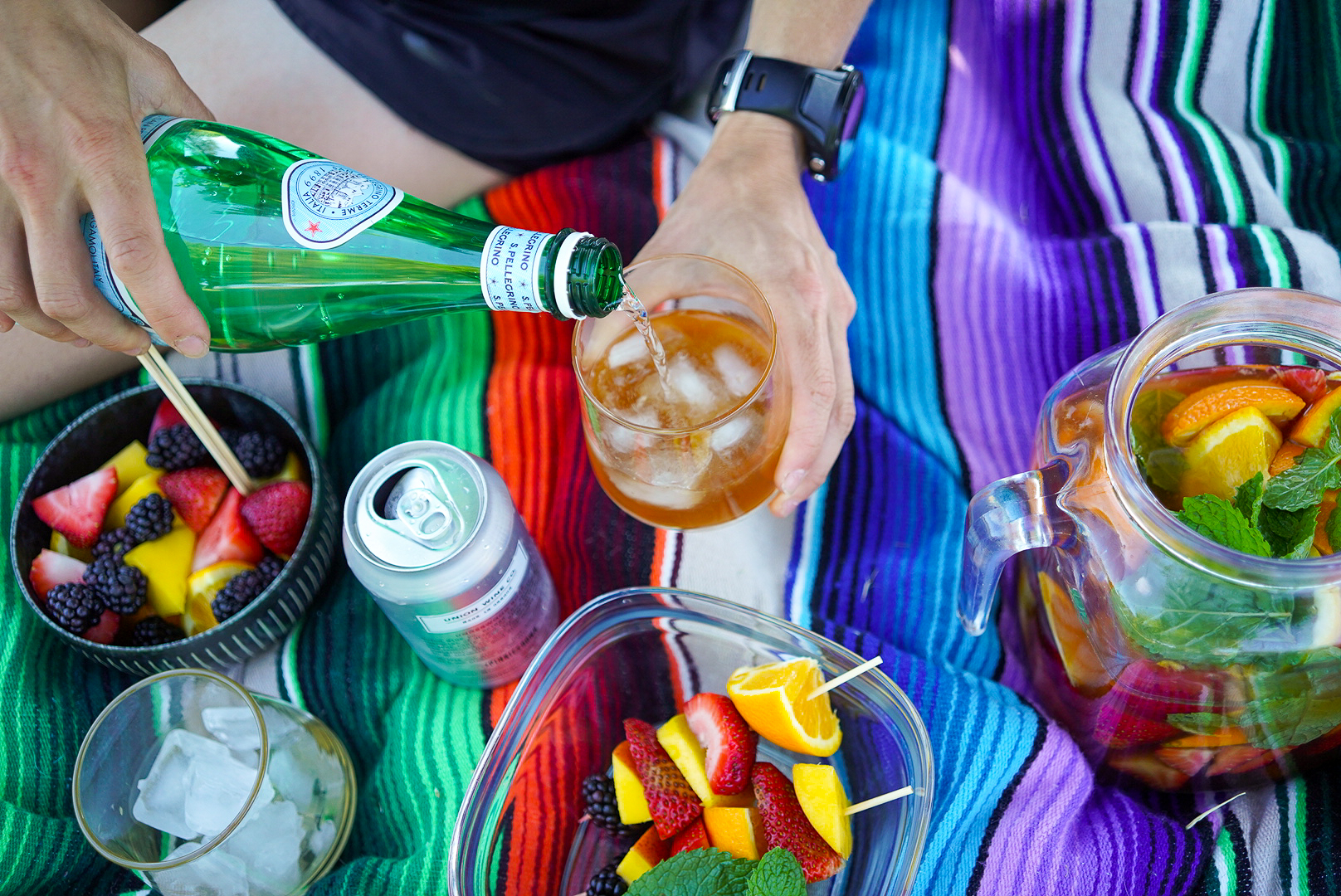
Directions:
Place oranges and strawberries in the bottom of a large mason jar or portable glass pitcher. Add the coconut sugar and stir.
Let sit for approximately 15 minutes.
Pour in the rosé and Grand Marnier. Add the mint and lemon. Stir and place in the fridge for 1-3 hours.
Pour the sangria into glasses with ice and top with sparkling water. Add the mango cubes, blackberries, and some fruit from the pitcher to skewers for garnish (and snacks).
Enjoy!
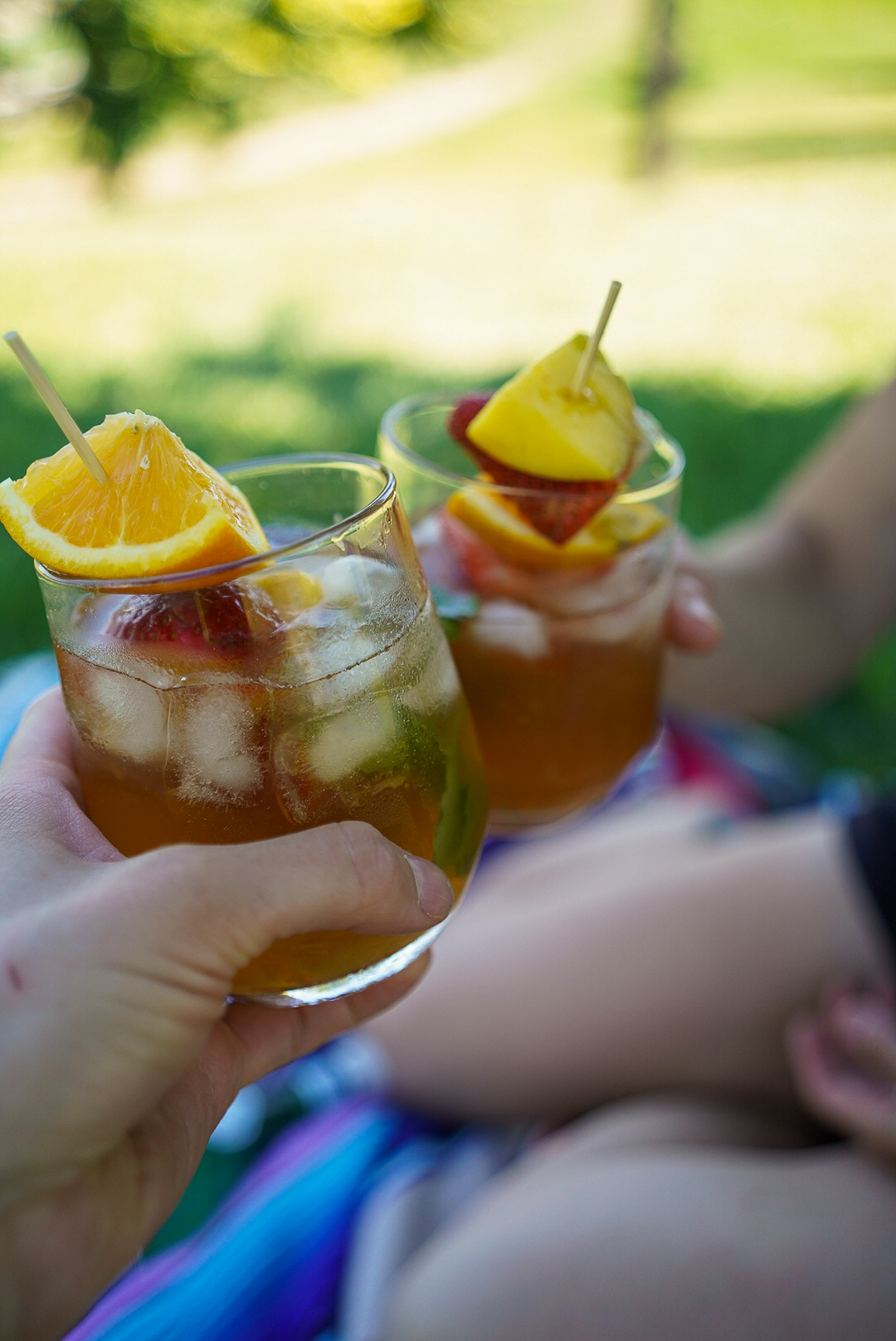
Recipe Inspired by: A Couple Cooks




